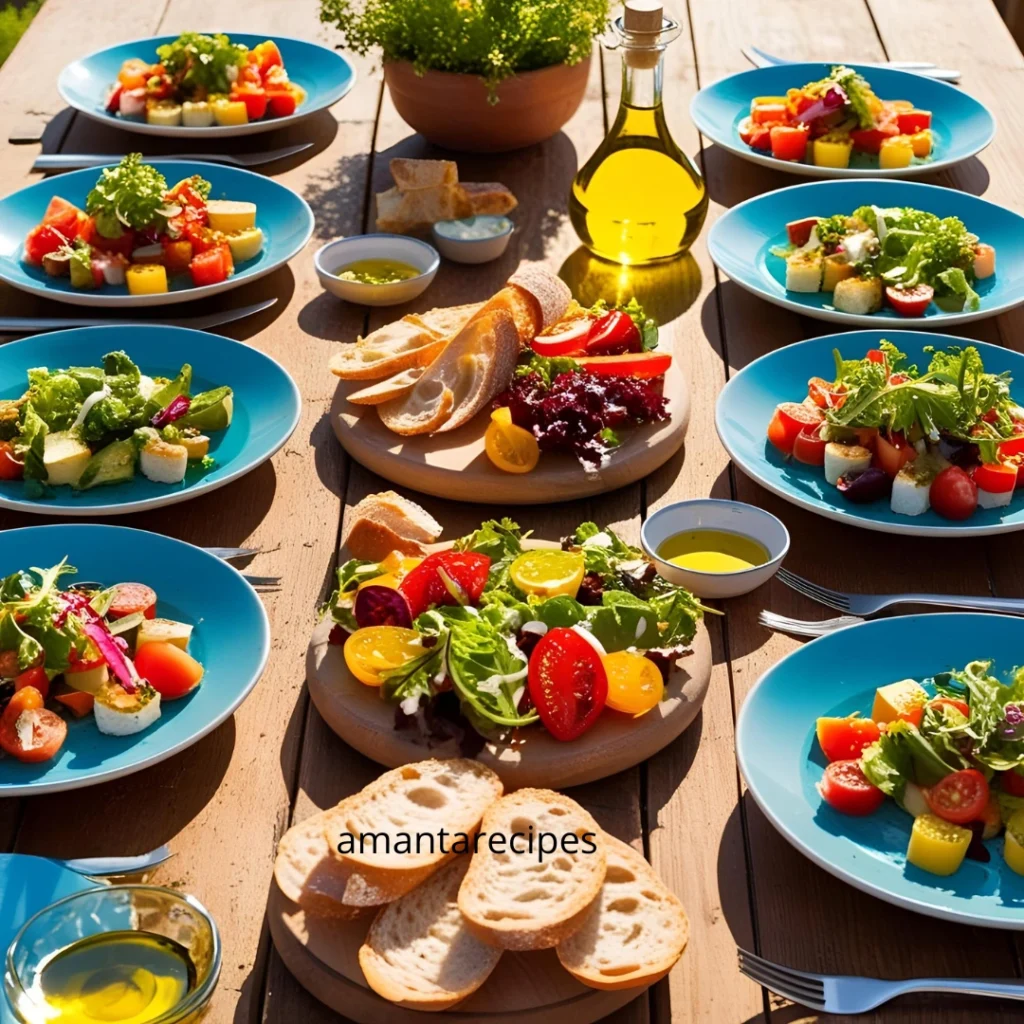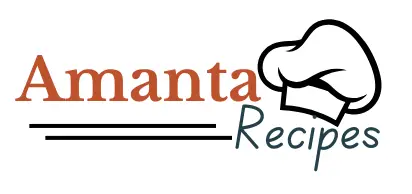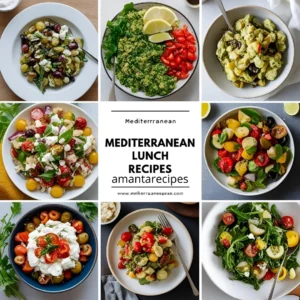Table of contents
What’s for Lunch? Discover the Secret to Flavorful, Healthy Mediterranean Meals
Are you tired of boring, bland lunches that leave you feeling sluggish by mid-afternoon? What if I told you there’s a way to enjoy meals that are not only delicious but also packed with nutrients and ready in no time? Enter Mediterranean lunch recipes—a vibrant blend of fresh ingredients, bold flavors, and heart-healthy benefits. In this article, we’ll show you how to whip up easy Mediterranean lunches that will revolutionize your mealtime routine.
Why Choose These Mediterranean Lunch Recipes?

These recipes are special because they combine simplicity, speed, and nutrition—all while tasting like a gourmet dish from your favorite restaurant. Whether you’re a busy professional or a parent juggling multiple tasks, these meals take less than 30 minutes to prepare and require minimal effort. Plus, they’re beginner-friendly, so even if you’re new to cooking, you’ll find them approachable and fun to make.
The best part? You can customize every element to suit your taste preferences. From plant-based options to protein-packed bowls, there’s something here for everyone.
Essential Ingredients: The Heart of Mediterranean Cuisine
Before diving into the recipe, let’s talk about the star players in Mediterranean cooking. These ingredients aren’t just tasty—they’re also loaded with health benefits:
- Olive Oil: A staple of Mediterranean diets, olive oil is rich in healthy fats and antioxidants. Use it as a base for dressings or drizzle it over finished dishes.
- Fresh Vegetables: Think tomatoes, cucumbers, bell peppers, spinach, and zucchini. These provide fiber, vitamins, and a burst of color.
- Whole Grains: Quinoa, farro, bulgur, and whole-grain pita bread add texture and keep you full longer.
- Lean Proteins: Options like grilled chicken, chickpeas, lentils, or baked salmon bring balance to your meal.
- Herbs and Spices: Fresh herbs like parsley, mint, dill, and oregano elevate the flavor without adding extra calories.
- Healthy Fats: Avocado, tahini, and nuts/seeds (like almonds or pine nuts) contribute creaminess and crunch.
Substitutions and Variations
Don’t have quinoa? Swap it out for brown rice or couscous. Hate chickpeas? Try black beans instead. The beauty of Mediterranean cuisine lies in its flexibility—you can tweak it endlessly based on what’s in your pantry.
Step-by-Step Instructions: Building Your Perfect Bowl
Now comes the fun part—actually making the dish! Follow these simple steps to create your own Mediterranean lunch masterpiece.
Step 1: Prep Your Base
Your base is the foundation of your meal. For most Mediterranean bowls, this means grains or leafy greens. Here’s how to do it:
- Cook quinoa according to package instructions (usually 1 cup quinoa + 2 cups water). Fluff with a fork when done.
- Alternatively, toss mixed greens like arugula or spinach with a splash of lemon juice and olive oil for a lighter option.
Pro Tip: Batch-cook your grains at the start of the week to save time during assembly.
Step 2: Roast or Grill Your Veggies
Roasted vegetables add depth and sweetness to your bowl. Here’s an easy method:
- Chop veggies like bell peppers, zucchini, and cherry tomatoes into bite-sized pieces.
- Toss with olive oil, salt, pepper, and dried oregano.
- Spread evenly on a baking sheet and roast at 400°F for 15–20 minutes until tender and slightly caramelized.
Step 3: Add Protein Power
Choose your protein source based on your dietary needs:
- For vegetarian options, use canned chickpeas (lightly seasoned and roasted) or boiled eggs.
- If you prefer meat, grill chicken breast or bake salmon fillets seasoned with garlic, paprika, and lemon zest.
Step 4: Whip Up a Simple Sauce
No Mediterranean dish is complete without a tangy sauce. Try one of these:
- Tahini Dressing: Mix tahini paste, lemon juice, minced garlic, and a pinch of salt. Thin with water until pourable.
- Lemon-Olive Oil Vinaigrette: Combine olive oil, lemon juice, Dijon mustard, and honey for a bright, zesty finish.
Assembly: Bringing It All Together
Once all your components are ready, it’s time to assemble your bowl. Follow these tips for maximum impact:
- Start with your base (grains or greens).
- Layer on roasted veggies and protein.
- Sprinkle toppings like crumbled feta cheese, sliced olives, or toasted pine nuts for extra flavor.
- Drizzle generously with your chosen sauce.
- Garnish with fresh herbs like parsley or dill for a pop of green.
For presentation, aim for a rainbow effect—variety in colors makes your bowl visually appealing and appetizing.
Storage and Make-Ahead Tips
One of the greatest advantages of Mediterranean bowls is their versatility for meal prep. Here’s how to store and reheat your creations:
- Store each component separately in airtight containers. This keeps everything fresh and prevents sogginess.
- Reheat proteins and grains gently in the microwave or stovetop. Avoid reheating greens; they’re best enjoyed cold.
- Assemble your bowl right before eating to maintain freshness and texture.
Recipe Variations: Get Creative!
Feel free to experiment with different combinations to keep things exciting:
- Veggie-Packed Wrap: Stuff a whole-grain wrap with hummus, roasted veggies, and spinach.
- Grain-Free Option: Skip the grains and serve your ingredients over a bed of lettuce for a refreshing salad.
- Pasta Twist: Use whole-grain pasta as your base and toss with olive oil, cherry tomatoes, and Parmesan cheese.
Conclusion: A Taste of the Mediterranean Awaits
With these easy Mediterranean lunch recipes, you’re well-equipped to create meals that are as nutritious as they are delicious. Not only will you save time, but you’ll also nourish your body with wholesome ingredients. So why wait? Head to your kitchen today and start experimenting with these ideas. Bon appétit!
FAQs About Mediterranean Lunch Recipes
Q: Are these recipes suitable for vegetarians?
A: Absolutely! Most Mediterranean dishes can easily be adapted for vegetarian diets by swapping meat for plant-based proteins like chickpeas, lentils, or tofu.
Q: Can I freeze any of these components?
A: Yes! Cooked grains and roasted veggies freeze well. Just thaw overnight in the fridge before using.
Q: How healthy are Mediterranean lunches?
A: Very! They’re rich in fiber, healthy fats, lean proteins, and antioxidants, which support heart health, digestion, and overall wellness.
Q: What if I don’t have all the ingredients?
A: No problem! Mediterranean cuisine is highly adaptable. Use what you have on hand and adjust seasonings to taste.
Q: Can I make these recipes kid-friendly?
A: Definitely! Kids love colorful foods. Try cutting veggies into fun shapes or serving dips like hummus alongside crackers or veggie sticks.

